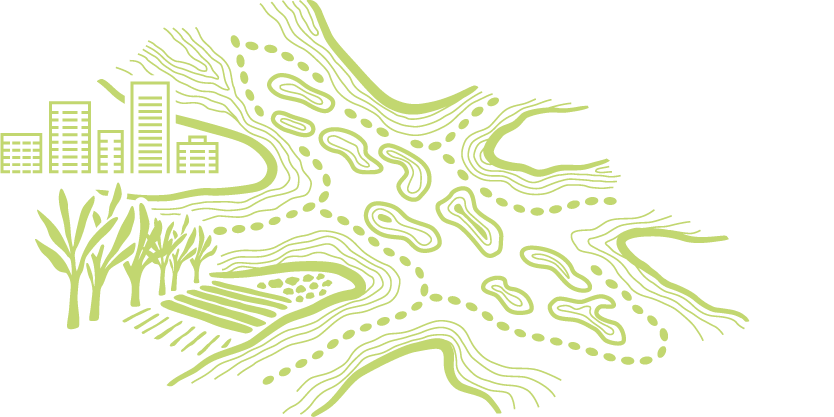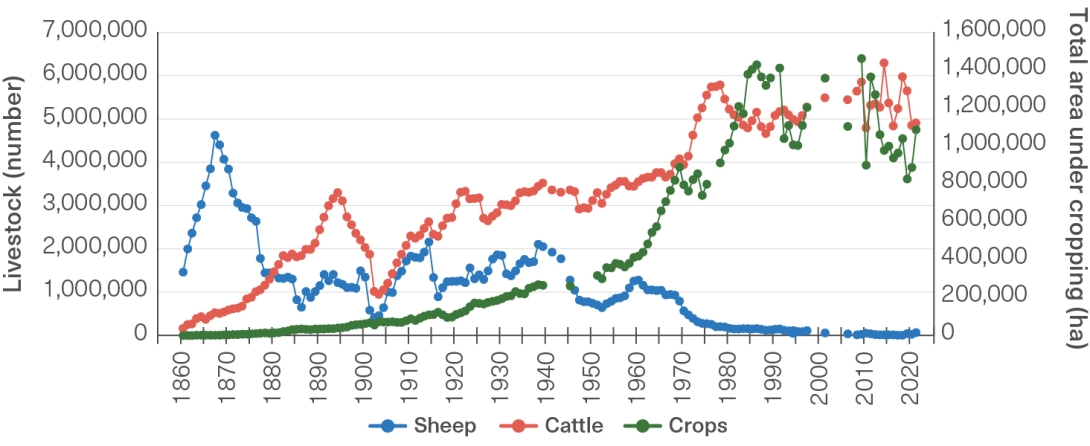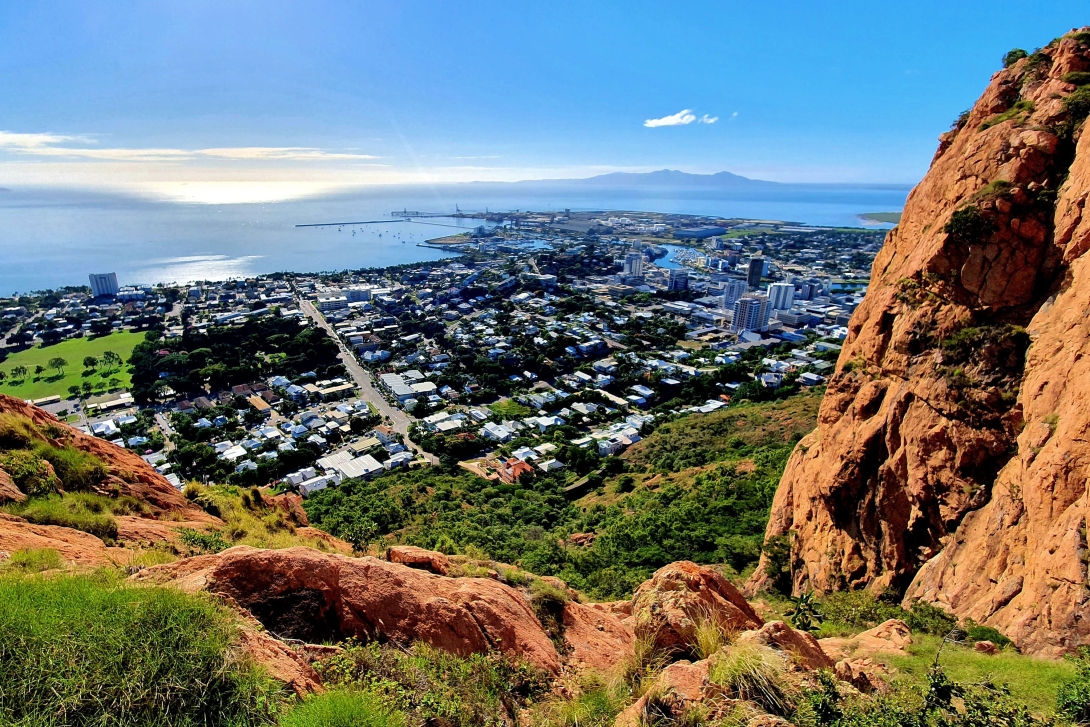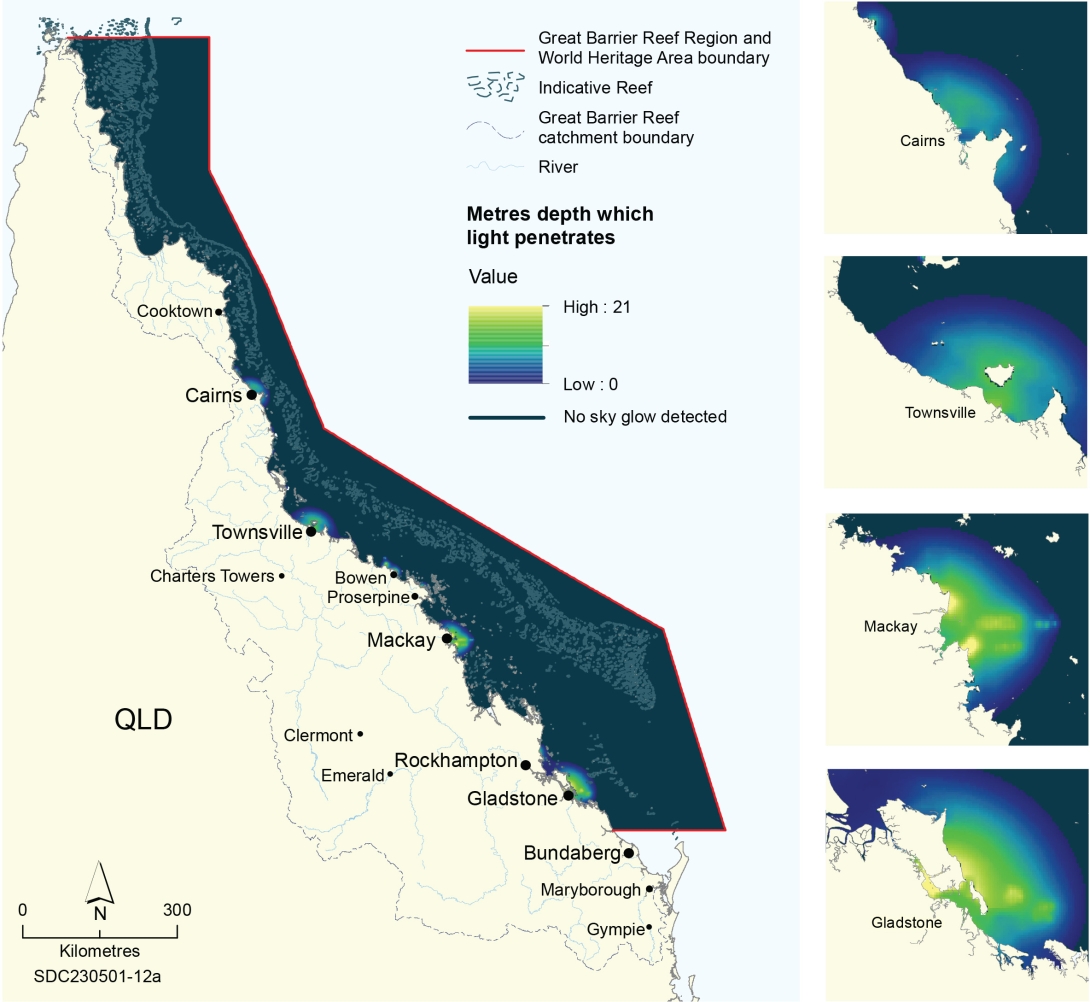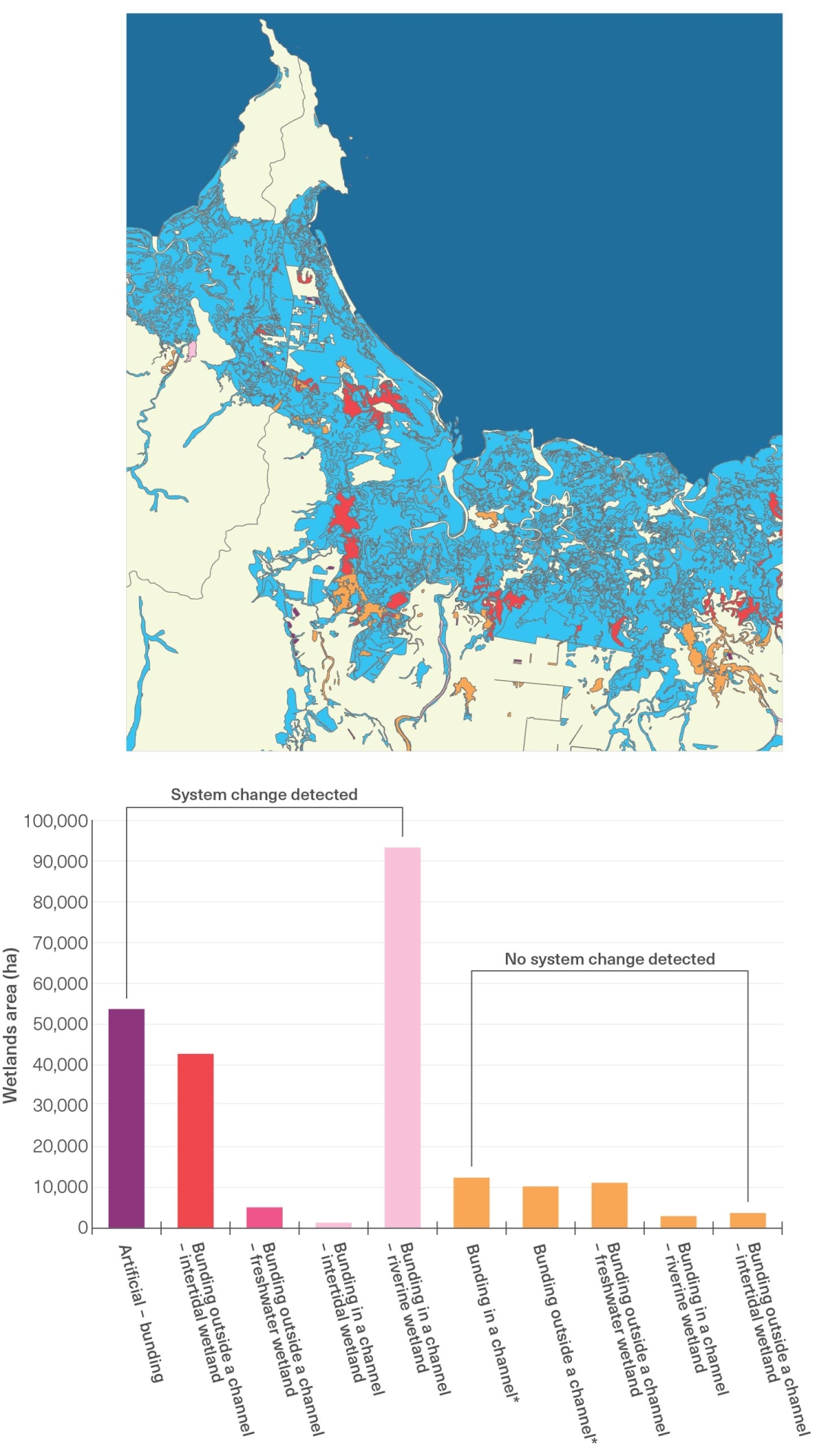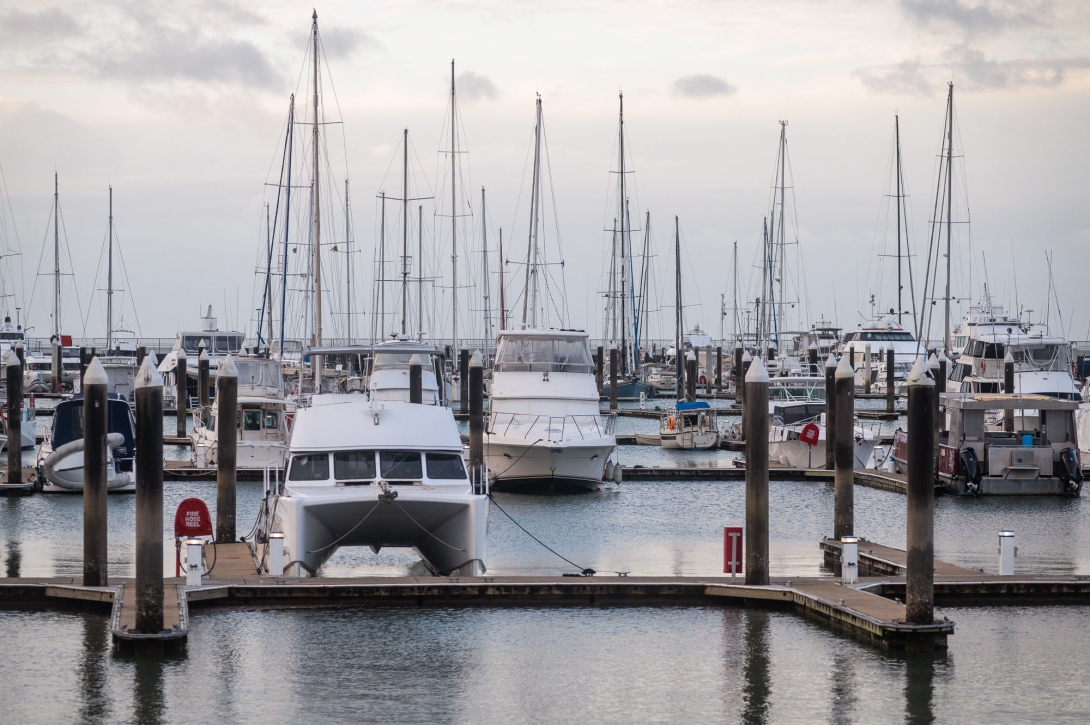40.
McCloskey, G.L., Baheerathan, R., Dougall, C., Ellis, R., Bennett, F.R., et al. 2021, Modelled estimates of fine sediment and particulate nutrients delivered from the Great Barrier Reef catchments, Marine Pollution Bulletin 165: 112163.
128.
Wet Tropics Waterways, 2. 2023, Wet Tropics Report Card 2023 reporting on data from July 2021 to June 22. Waterway Environments: Results, Wet Tropics Waterways and Terrain NRM, Innisfail.
938.
Abbott, B.N., Wallace, J., Nicholas, D.M., Karim, F. and Waltham, N.J. 2020, Bund removal to re-establish tidal flow, remove aquatic weeds and restore coastal wetland services—North Queensland, Australia, PLoS One 15(1): e0217531.
951.
The State of Queensland (Department of Environment and Science) and Australian Government 2024, Reef Water Quality Report Card 2021- 2022, DES, Brisbane.
1318.
State of Queensland 2022, Ross Lobegeiger report to farmers Aquaculture production summary for Queensland 2021-22, Department of Agriculture and Fisheries, Brisbane.
-
1734.
Lewis, S.E., Bartley, R., Wilkinson, S.N., Bainbridge, Z.T., Henderson, A.E., et al. 2021, Land use change in the river basins of the Great Barrier Reef, 1860 to 2019: A foundation for understanding environmental history across the catchment to reef continuum, Marine Pollution Bulletin 166: 112193.
1735.
Department of Environmental and Science 2023, Land use mapping - 2021 - Great Barrier Reef NRM regions. <https://www.data.qld.gov.au/dataset/2021_great_barrier_reef_land_use>
-
-
1739.
State of Queensland (Office of the Queensland Chief Scientist) 2023, Native Vegetation Scientific Expert Panel report #32504, January 2023, Office of the Queensland Chief Scientist, Brisbane.
1740.
Department of Environmental and Science 2023, Landcover replacement class of woody vegetation change in Queensland in 2020-21, by Great Barrier Reef (GBR) region and non-GBR region, DES, Brisbane.
-
1742.
Australian Bureau of Statistics 2023, Labour Force, Australia, Detailed, Australian Bureau of Statistics. <https://www.abs.gov.au/statistics/labour/employment-and-unemployment/labour-force-australia-detailed/latest-release.>
-
1744.
Department of Resources 2023, 'Mining and resources statistics for the Great Barrier Reef - as reported to the Department of Resources (unpublished)'. Unpublished report.
1745.
Saint-Amand, A., Grech, A., Choukroun, S. and Hanert, E. 2022, Quantifying the environmental impact of a major coal mine project on the adjacent Great Barrier Reef ecosystems, Marine Pollution Bulletin 179: 113656.
-
1747.
Setzer, J. and Higham, C. 2022, Global Trends in Climate Change Litigation: 2022 Snapshot, Grantham Research Institute on Climate Change and the Environment and Centre for Climate Change Economics and Policy, London School of Economics and Political Science., London.
1748.
McCloskey, G.L., Baheerathan, R., Dougall, C., Ellis, R., Bennett, F.R., et al. 2021, Modelled estimates of dissolved inorganic nitrogen exported to the Great Barrier Reef lagoon, Marine Pollution Bulletin 171: 112655.
1749.
Patterson, M.A., Webster, J.M., Hutchings, P., Braga, J., Humblet, M., et al. 2020, Bioerosion traces in the Great Barrier Reef over the past 10 to 30 kyr, Palaeogeography, Palaeoclimatology, Palaeoecology 542: 109503.
2171.
Queensland Government 2023, 2020-21 Statewide Landcover and Trees Study (SLATS) report, Brisbane.
2172.
Queensland Government 2021, 2018-19 Statewide Landcover and Trees Study (SLATS) report, Brisbane.
1750.
Smyth, T.J., McKee, D. and Davies, T.A. 2021, A global atlas of artificial light at night under the sea, Elementa Science of the Anthropocene 9(1).
-
1752.
Ramsay, I., Sudarjanto, G., Claus, S., Clech-Goods, C. and Munns, T. 2020, Great Barrier Reef point source metadata collection project final report, Environmental Monitoring and Assessment Science, Science Division & Technology Department of Environment and Science, Brisbane.
1753.
Waterhouse, J., Brodie, J., Lewis, S. and Audas, D. 2016, Land-sea connectivity, ecohydrology and holistic management of the Great Barrier Reef and its catchments: time for a change, Ecohydrology & Hydrobiology 16(1): 45-57.
1754.
Sheaves, M., Brookes, J., Coles, R., Freckelton, M., Groves, P., et al. 2014, Repair and revitalisation of Australia׳s tropical estuaries and coastal wetlands: Opportunities and constraints for the reinstatement of lost function and productivity, Marine Policy 47: 23-38.
1755.
Department of Environment and Science 2023, Queensland Wetland Data Version 6.0, Queensland Wetlands Program, Queensland Government, Brisbane.
1756.
Lawrence, M., Sully, D., Beumer, J. and Couchman, D. 2009, Targeted collection of inventory data for wetlands fish barriers of the Great Barrier Reef catchment, Department of Primary Industries and Fisheries, Brisbane.
1757.
Department of Employment, Economic Development and Innovation 2011, Inventory of instream structures impacting on Ramsar Wetlands, Queensland Wetlands Program, Brisbane.
1758.
Mackay-Whitsunday-Isaac Healthy Rivers to Reef Partnership 2023, Mackay-Whitsunday-Isaac 2022 Report Card reporting on waterway health data collected between July 2021 and June 2022, Mackay-Whitsunday-Isaac Healthy Rivers to Reef Partnership, Proserpine.
1759.
Moore, M. 2015, Mackay Whitsunday fish barrier prioritisation, Catchment Solutions Pty Ltd, Mackay.
1760.
Moore, M., Fries, J. and Power, T. 2021, Fish barrier prioritisation – Murray and Lower Herbert Rivers, Catchment Solutions Pty Limited, Mackay.
-
-
1763.
Department of Environment and Science 2022, Wetland Condition Assessment Tool (WetCAT): A Condition Assessment Tool for Measuring Event Recovery and Rehabilitation in Palustrine and Lacustrine Wetlands in Queensland, Version 1.0, June 2022, Queensland Government, Brisbane.
1764.
Department of Environment and Science 2022, Queensland aquatic fauna passage structures (biopassage), Queensland Government, Brisbane.
1765.
Department of Agriculture and Fisheries 2024, 'Unpublished data: Waterway Barrier Works Applications and Notification'. Unpublished report.
1766.
Waltham, N.J. and Sheaves, M. 2015, Expanding coastal urban and industrial seascape in the Great Barrier Reef World Heritage Area: Critical need for coordinated planning and policy, Marine Policy 57: 78-84.
1767.
Richards, S. 2021, NbS Benchmark Assessment Report, BMT Commercial Australia Pty Ltd, Cairns.
1768.
Bradley, M., Sheaves, M. and Waltham, N.J. 2023, Urban-industrial seascapes can be abundant and dynamic fish habitat, Frontiers in Marine Science 9: 1034039.
-
1770.
Bartley, R., Waters, D., Turner, R., Kroon, F., Wilkinson, S., et al. 2017, Scientific Consensus Statement 2017: A Synthesis of the Science of Land-based Water Quality Impacts on the Great Barrier Reef, Chapter 2: Sources of sediment, nutrients, pesticides and other pollutants to the Great Barrier Reef, State of Queensland, Brisbane.
1771.
Brooks, A., Daley, J. and Pietsch, T. 2024, 2022 Scientific Consensus Statement: Summary | Evidence Statement for Question 3.6: What is the effectiveness of gully and streambank restoration works in reducing sediment and particulate nutrient loss from the GBR catchments, does this vary spatially or in different climatic conditions? What are the costs and cost-effectiveness of these works, and does this vary spatially or in different climatic conditions? What are the production outcomes of these practices? in 2022 Scientific Consensus Statement on land-based impacts on Great Barrier Reef water quality and ecosystem condition, eds J. Waterhouse, M. Pineda and K. Sambrook, Commonwealth of Australia and Queensland Government.
1772.
Cape York Natural Resource Management and South Cape York Catchments 2016, Eastern Cape York Water Quality Improvement Plan., Cape York Natural Resource Management, Cooktown.
1773.
State of Queensland (Department of Agriculture and Fisheries) 2016, Queensland waterways for waterway barrier works - Tidal, Queensland Government, Brisbane.
1774.
Kelleway, J. 2006, Ecological impacts of recreational vehicle use on saltmarshes of the Georges River, Sydney, Wetlands (Australia) 22(2): 52.
1775.
Trave, C. and Sheaves, M. 2014, Ecotone analysis: assessing the impact of vehicle transit on saltmarsh crab population and ecosystem, SpringerPlus 3(1): 655.
-
1777.
Tabrett, S., Ramsay, I., Dias, F.S., Burford, M., Claus, S., et al. 2024, Review of nutrient release from aquaculture activities, prepared for the Office of the Great Barrier Reef, Department of Environment and Science, State of Queensland, Brisbane.
1778.
De Costi Seafoods Pty Ltd 2022, EPBC Act Referral: 2022/9156 - Proserpine Prawn Farm - Stage 4, Department of Climate Change Energy Environment and Water.
1779.
De Costi Seafoods Pty Ltd 2023, EPBC Act Referral: 2023/09455 - Proserpine Prawn Farm - Stage 4, Department of Climate Change Energy Environment and Water.
1780.
De Costi Seafoods Pty Ltd 2023, Initial Advice Statement for the Proserpine Prawn Farm Expansion, De Costi Seafoods Pty Ltd.
-
1782.
Department of Transport and Main Roads 2020, Marine Incidents in Queensland 2019, Maritime Safety Queensland, Brisbane.
1783.
Department of Transport and Main Roads 2021, Marine Incidents in Queensland 2020, Queensland Government, Brisbane.
1784.
Department of Transport and Main Roads 2022, Marine Incidents in Queensland 2021, Queensland Government, Brisbane.
1785.
Department of Transport and Main Roads 2023, Marine Incidents in Queensland 2022, Queensland Government, Brisbane.
-
1787.
Wishaw, D., Heiner, N. and Long, G. 2023, Queensland Recreational Boating Facilities Demand Forecasting Study 2022, Maritime Safety Queensland, Queensland Government, Brisbane.
1788.
Department of Tourism Innovation and Sports 2023, Great Barrier Reef Island Marine Infrastructure Package, Queensland Government, Brisbane.
1789.
Maritime Safety Queensland 2023, 'Unpublished data: Queensland marine access facilities dredging and disposal adjacent to the GBR, 2019 – 2023'. Unpublished report.
1790.
Australian Bureau of Statistics 2021, QuickStats Census All persons, ABS, Canberra.
1791.
Department of Environment, Science and Innovation (Parks and Forests) 2023, Ecotourism Plan for Queensland's Protected Areas 2023-2028, Queensland Government, Brisbane.
1792.
Minister for Tourism, Innovation and Sport and Minister Assisting the Premier on Olympics and Paralympics Sport and Engagement, The Honourable Stirling Hinchliffe 2022,
$3m for better Great Barrier Reef island access, Media Statement 96036, <
https://statements.qld.gov.au/statements/96036>.
1793.
The Department of State Development, Infrastructure, Local Government and Planning 2023, Woppa (Great Keppel Island) Draft Master Plan 2023, Queensland Government, Brisbane.
1794.
Minister for Innovation and Tourism Industry Development and Minister for the Commonwealth Games The Honourable Kate Jones 2019,
Work begins on Queensland’s iconic Great Barrier Reef islands, Media Statement 86962, <
https://statements.qld.gov.au/statements/86962>.

